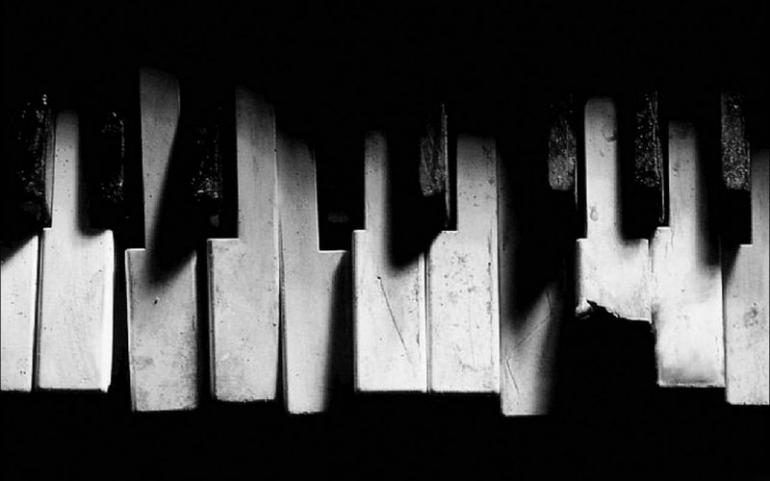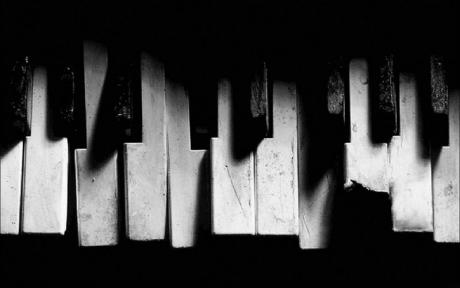Rockové klávesy - Emulace dechových nástrojů, část 1
Part 1: Vangelis and sax sounds
Welcome readers to another installment of rock keyboards. This month I wanted to talk a little bit about using keyboards to emulate the sounds of saxophone and harmonica. This will be part one of a two-part article talking about this topic. Next month we will speak about emulating flute and trumpet sounds.

Vangelis and Blade Runner
Even though he does not emulate saxophone sounds specifically, I really love the way Greek synth giant, Vangelis, uses analog synths on the original 1982 Blade Runner sound track to get expressive wind blown instrument sounds. Before we talk about realistic sax sounds I just
wanted to mention his music and some of his techniques because I think it will really help you get the flavor of playing wind sounds on keyboard. One of his most important synths Vangelis used for these sounds was the Yamaha CS-80. This synth could be programmed for aftertouch and velocity sensitivity to further color the sound. A ribbon controller added even more control. Again, these sounds are not the most accurate sounding wind compared to other more modern synths, but Vangelis plays them so convincingly I wanted to mention them before we got any further in out discussion. Here is a link:

Realistic sax sounds
My favorite modern synth for realistic sax sounds is The Yamaha Motif. The Motif has a very good rock sax sound that you can hear in this video link:
https://www.youtube.com/watch?v=-cF_Z7bxI1Y
When emulating a funky sax on a keyboard, it’s good to play with a very staccato touch to get the stabby feel of someone like Clarence Clemons who played with Bruce Springsteen and the E Street Band. I think he is a great artist to listen to for rock sax solos. Listening to him will really get you to think like a sax player. Here’s a clip with Clarence with Springsteen:

Rock sax phrases should be short to sound authentic. Unlike keyboardists, saxophonists need to breathe to play phrases. If you don’t play with lots of space, you could easily give away that you don’t really understand the idiom. The pitch and mod wheels can also be used with great effect. Try pitching down at the end of a line to get a little bend to the sound and adding a little mod wheel LFO for a vibrato effect.
FRÁZE A HUDEBNÍ TERMÍNY
Wind blown instruments: Nejobecnější výraz pro dechové nástroje (častěji zkráceně „wind instruments“), které se dále dělí na žesťové (anglicky brass) a dřevěné (woodwinds).
Ribbon controller: Je ovládací prvek, pomocí něhož můžeme ovládat elektronický nástroj, zpravidla syntezátor, a to posunem či tlakem prstu na (většinou gumovém) „pásku“. Přiřadit k němu můžeme velké množství parametrů, podobně jako k ovladačům modulation wheel nebo pitch bend. Má se za to, že první syntezátor vybavený ribbon controllerem byl Persephone z 20. let minulého století, u kterého se takto ovládala výška tónu (a už tento model reagoval na změnu tlaku).
Stabby feel: Se slovem „stab“ už jsme se setkali. Obzvláště u žesťových nástrojů se takto označuje hlasité staccato, tedy hra krátkých tónů. „Stab“ znamená vlastně „bodnout“ či „bodnutí“ (spíše nožem než hmyzem), což poměrně dobře popisuje „stabby feel“, tedy hru, která působí sekaně či „bodavě“.
LFO - low frequency oscillator: Oscilátor s tak pomalou frekvencí, že kdybychom jej použili pro samotné generování tónu, nacházel by se pod slyšitelným spektrem. Je však užitečný pro celou řadu aplikací, například pro modulování hlasitosti (efekt tremolo) nebo otevírání a zavírání filtru. U většiny moderních syntezátorů můžeme k LFO přiřadit téměř jakýkoli parametr, takže se fantazii meze nekladou.





